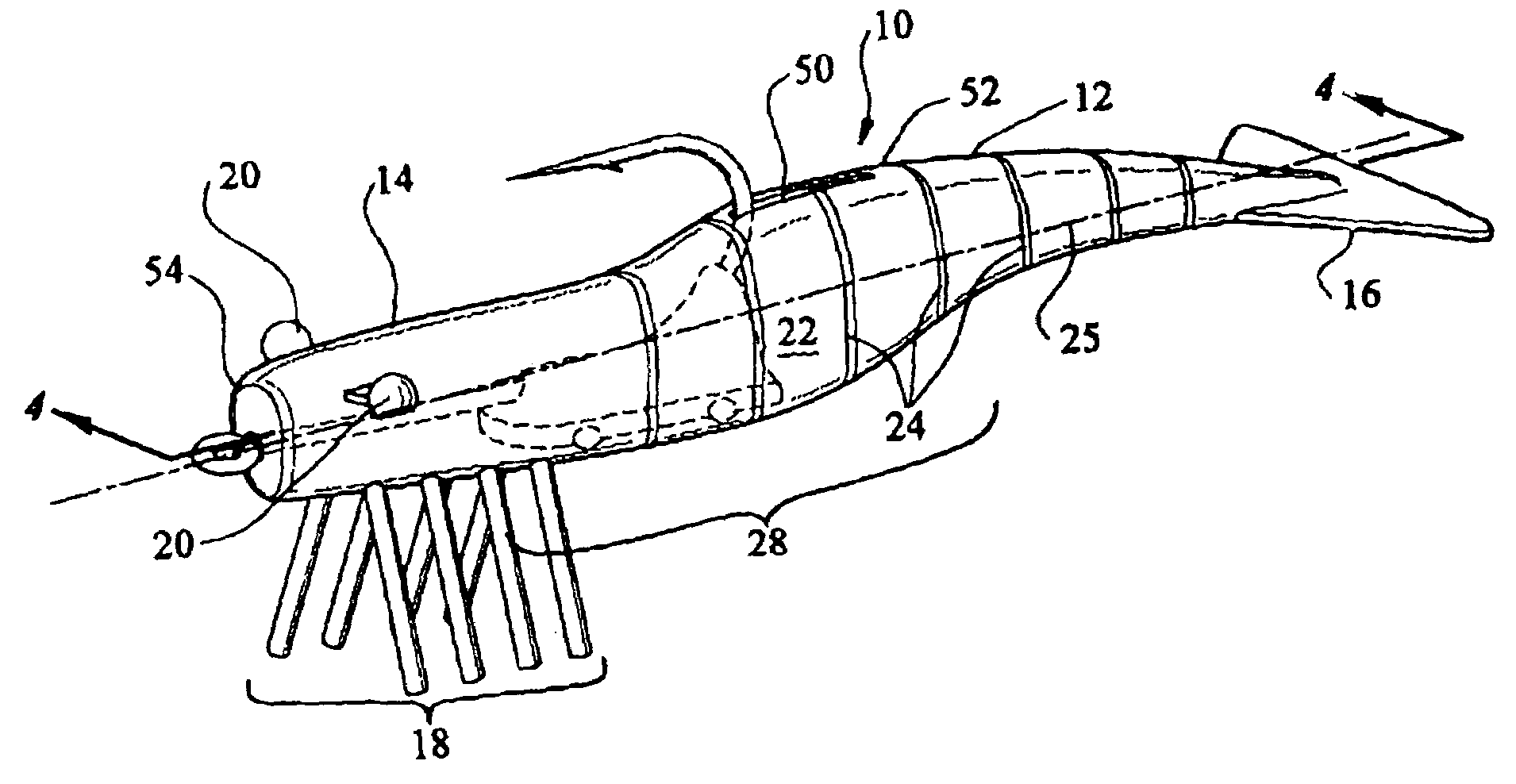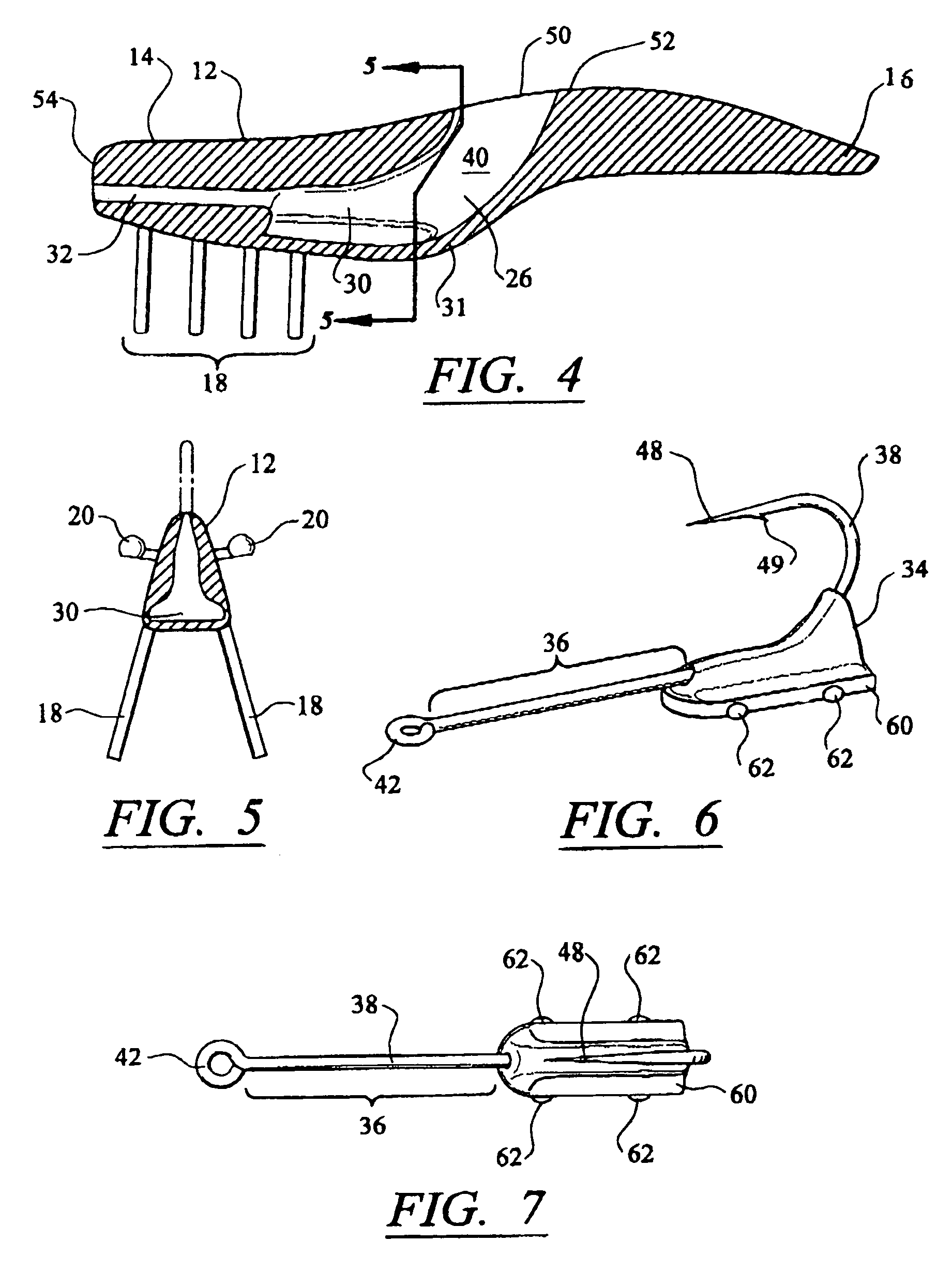Fishing lure
a technology of lures and lures, applied in the field of fishing lures, can solve the problems of damage from these events, soft bodied lures face a much larger challenge, and the cavity of the lure body containing the hooks is often disfigured or torn, so as to reduce the wear on the body, enhance the stability of the lure body, and limit the susceptibility of the lur
- Summary
- Abstract
- Description
- Claims
- Application Information
AI Technical Summary
Benefits of technology
Problems solved by technology
Method used
Image
Examples
Embodiment Construction
[0027]As shown in FIGS. 3–11, this invention is directed to a fishing lure 10 that simulates a natural baitfish or crustaceans when suspended in water. In at least one embodiment, the fishing lure 10 may be an imitation of a shrimp having a configuration enabling the lure to maintain an attitude, or position, of a living shrimp while pulled through the water. The fishing lure 10 may include a hook and weight combination enabling the hook to remain in the body even as the hook is pulled from a line receiving portion of the hook. Thus, the hook remains in position while being cast repeatedly and even after numerous fish have been caught using the lure body.
[0028]The fishing lure 10 may be formed from a body 12 having a head 14, a tail 16, and a plurality of legs 18 extending from the head 14. The tail 16 may be a flat tail, as shown in FIG. 3, a paddle tail, a curly tail, or other appropriate structure. The head 14 may resemble a shrimp head or that of a fish. The plurality of legs 18...
PUM
 Login to View More
Login to View More Abstract
Description
Claims
Application Information
 Login to View More
Login to View More - R&D
- Intellectual Property
- Life Sciences
- Materials
- Tech Scout
- Unparalleled Data Quality
- Higher Quality Content
- 60% Fewer Hallucinations
Browse by: Latest US Patents, China's latest patents, Technical Efficacy Thesaurus, Application Domain, Technology Topic, Popular Technical Reports.
© 2025 PatSnap. All rights reserved.Legal|Privacy policy|Modern Slavery Act Transparency Statement|Sitemap|About US| Contact US: help@patsnap.com



